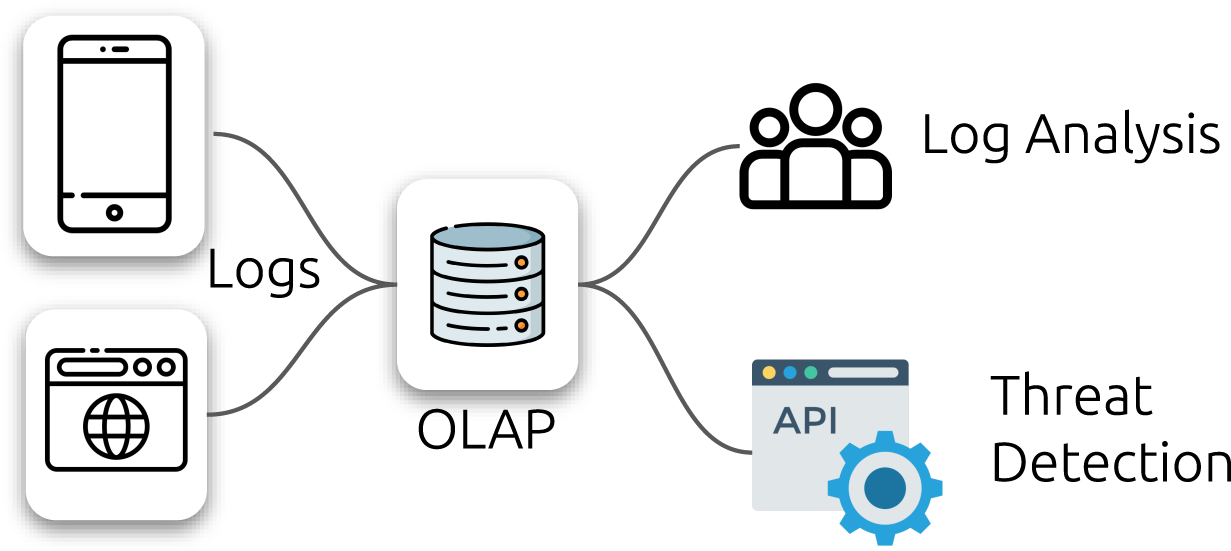
Event Logging:
Definition:
Event logging is the practice of recording specific occurrences or events within a system or application. These events can include various activities, errors, warnings, or informational messages generated during the operation of software or hardware. The purpose of event logging is to create a chronological record of events that can be used for troubleshooting, monitoring, and analysis.
Key Points:
Logging Types:
Events can be categorized into different types, such as informational, warning, error, and critical. Each type provides insights into the health and performance of the system.
Diagnostic Tool:
Event logs serve as a diagnostic tool, helping system administrators and developers identify issues, track changes, and understand the sequence of events leading up to a particular situation.
Security Monitoring:
In the context of security, event logging is crucial for monitoring and detecting potential security incidents. Security events may include login attempts, access violations, or other suspicious activities.
Registries and Files:
Event logs are often stored in registries or log files. Operating systems, applications, and network devices maintain separate logs, and centralized logging systems may aggregate these logs for easier analysis.
Threat Detection:
Once these logs are collected in batch or real-time, this is where threat detection comes in. First a definition of it: threat detection refers to the processes, technologies, and practices designed to identify and analyze malicious activities or vulnerabilities that could potentially compromise the security and integrity of information systems, networks, and data. The primary goal of threat detection is to detect these potential threats early enough to prevent or mitigate any harm they might cause.
Threat detection encompasses a wide range of techniques and tools, including but not limited to:
1. Intrusion Detection Systems (IDS): These systems monitor network or system activities for malicious activities or policy violations. There are several types of IDS, including network-based (NIDS), host-based (HIDS), and others that analyze specific types of network traffic.
2. Security Information and Event Management (SIEM): SIEM systems provide real-time analysis of security alerts generated by applications and network hardware. They collect, store, analyze, and report on log data for incident response, forensics, and regulatory compliance.
3. Antivirus and Anti-malware Solutions: These tools scan for malware based on known signatures or behaviors to detect and remove malicious software.
4. Anomaly Detection: This involves monitoring network or system activities to identify unusual patterns or behaviors that could indicate a security threat, relying on machine learning and statistical techniques to differentiate between normal and potentially harmful activities.
5. Endpoint Detection and Response (EDR): EDR tools continuously monitor and collect data from endpoints (e.g., laptops, desktops, mobile devices) to detect and investigate cybersecurity threats. They often provide automated response capabilities to contain and mitigate threats.
6. Threat Intelligence Platforms: These platforms gather, analyze, and disseminate information on threats, including indicators of compromise (IOCs), tactics, techniques, and procedures (TTPs) of threat actors, to improve detection and response strategies.
7. Vulnerability Scanning and Assessment: This process involves identifying, classifying, and mitigating vulnerabilities in software and network systems that could be exploited by attackers.
Cybersecurity threat detection is a critical component of a comprehensive cybersecurity strategy, enabling organizations to respond to threats proactively rather than reactively. Effective threat detection requires continuous monitoring, analysis of vast amounts of data, and the integration of various tools and technologies to cover different aspects of an organization’s digital footprint.
Why Bare Metal?
To effectively manage the immense volume of data and fulfill the critical low-latency demands inherent in logging and threat detection, delivering optimal performance is essential for the success of any enterprise. Many software solutions available today excel in scaling up or vertically, as opposed to scaling out or horizontally. This indicates a preference for maintaining larger, more powerful servers, rather than operating numerous smaller ones.
Bare-metal.io provides the lowest cost and highest performing servers allowing you to provide the best possible solutions for low latency, high volume data analytics and real-time analysis.
Contact us for more information.
